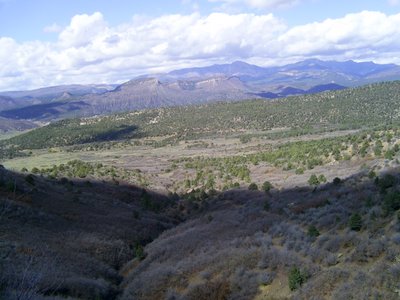Lactic Threshold

After my Durango Double, there was no muscle soreness. I thought for sure that after 57 miles, much of it on rugged and muddy terrain, that I would be crippled and sore, but to my surprise, there was only some minor ligament soreness that healed with my usual easy training runs around Wash. Park and the Denver Trail Runners Thursday run.
A friend pointed out that this is because I never crossed my lactic threshold. Duh! It never dawned on me.
For those who don't know, when you operate beyond your lactate threshold, lactic acid builds up in your muscle tissue. High concentrations of lactic acid end up crystalizing. This take several days for your body to clean out and is part of the usual recovery process.
You can speed this process up by getting massage (gets expensive but feels great), and/or by icing your legs.
Icing causes your muscles to contract hard (like wringing out a wet towel). This squeezes out the acid. Folow with hot/cold/hot/cold therapy and you'll replace stagnant, acidic fluids with new hi-nutrient fluids. If done right, your recovery period is a day, with no pain.
So now I'm really psych'd. If I have the right pace, I can definitely do a hundred.
Much of this ultra-running seems impossibly difficult, but actually, if you know all the tricks, nearly anyone can do it. Train smart; race smart. Brute-force isn't smart. If you're using brute-force, your training has failed.
I had thought that maybe I'd be better off running Leadville with a few long rests. Afterall, I ran the Leadville Marathon in 5:22. That pace is 12+ minutes per mile. If I ran the 100 at that pace, I'd finish in 20 hours, 30 minutes. That'd give me 9 hours and 30 minutes of extra time. So what if I took a couple of naps?
But I think that's wrong. You mustn't stop for too long, unless you're wrecked and have no other choice. A steady pace below lactic threshold is best.
This is also good for getting into "auto-pilot". In the later parts of the race, if I've been travelling at the same run/walk/run/walk pace for 20+ hours, and my mind is starting to wig-out on me, maybe I can just kick into auto-pilot and zone-out - just follow the cyalume glow-sticks through the night. Same pace, feeling nothing, just go. If I take long breaks, it could reset the rhythm and mess that up.


0 Comments:
Post a Comment
<< Home